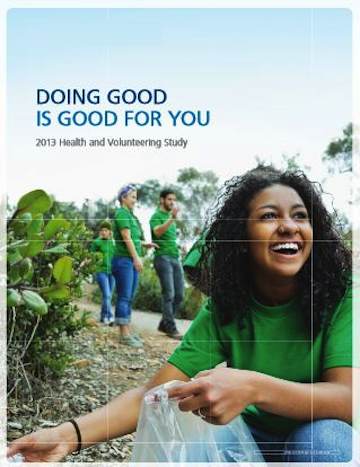 It is generally accepted that volunteering is a good thing to do for others. But is it true volunteering also benefits the volunteer? UnitedHealth Group wanted to look into this phenomenon further so they decided to conduct a comprehensive survey and analysis on the positive effects employees and employers receive from volunteering.
It is generally accepted that volunteering is a good thing to do for others. But is it true volunteering also benefits the volunteer? UnitedHealth Group wanted to look into this phenomenon further so they decided to conduct a comprehensive survey and analysis on the positive effects employees and employers receive from volunteering.
The 2013 Health and Volunteering Study used a nationwide sample of 3,351 volunteers and non-volunteers. Through this survey they found evidence to support the idea that when employees volunteered they felt less stressed and an overall increase in their physical, mental, and emotional well-being.
The numbers were not only significant, they were at times overwhelming.
- 75% of volunteers felt physically better after volunteering
- 64% of volunteers with a chronic disease felt volunteering helped to manage their illness
- 78% of volunteers felt their stress levels go down
- 94% of volunteers said volunteering improved their mood
- 80% of volunteers felt they had more control over their health
Based on these findings, employers are realizing benefits like lower healthcare costs, higher job productivity, and a reduction in turnover when they encourage and facilitating volunteerism in their employees.
Carol Simon and Kate Rubin from UnitedHealth provided some tips for companies to increase volunteer opportunities for their workforce:
- Increase promotion for your current volunteer programs.
- Show employees the benefits they get from volunteering.
- Tie your volunteer programs to any wellness activities or health benefits programs that your company already has in place.
Learn more about this study or print the booklet here.




















I’m glad I’m taking the volunteering approach as I want to improve my chances of finding employment.